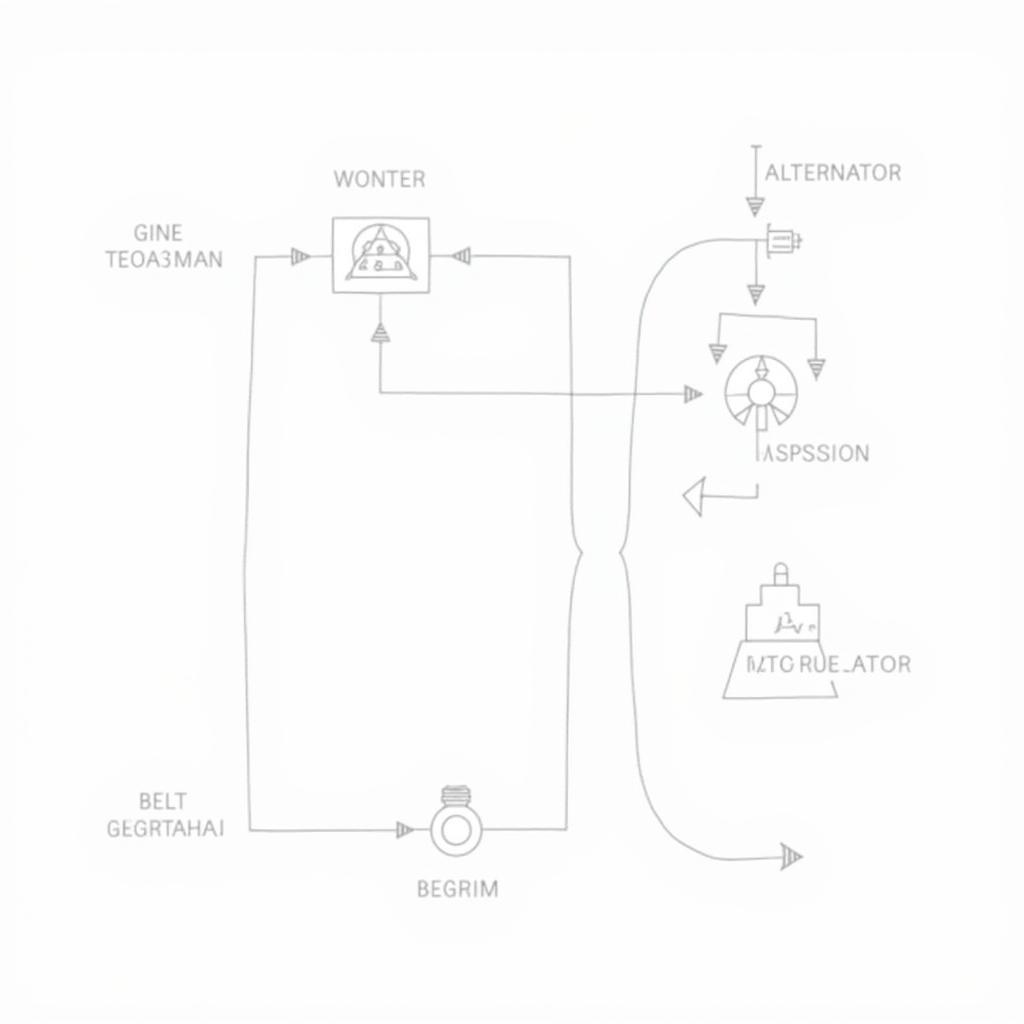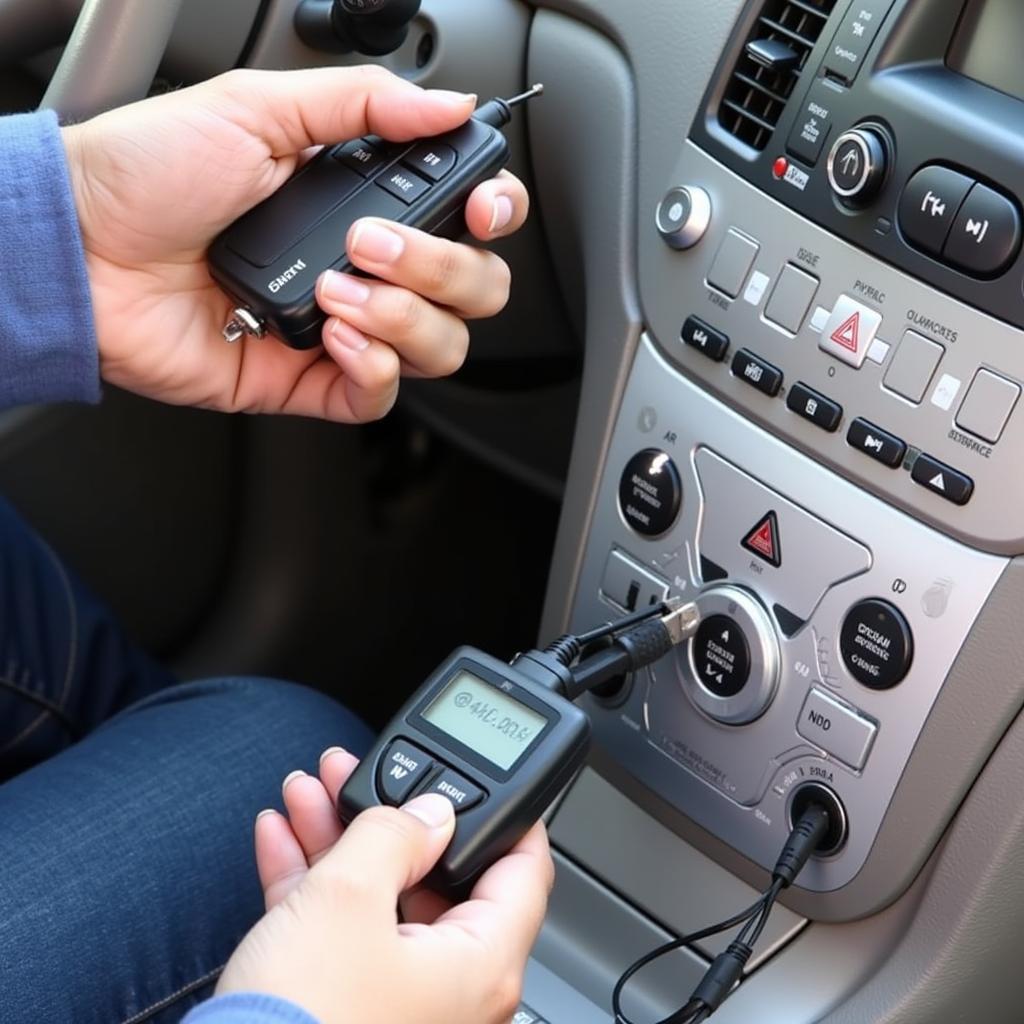An alternator not fully charging your battery can lead to a host of problems, from a dead battery to serious damage to your car’s electrical system. This guide provides in-depth information on diagnosing, troubleshooting, and fixing this common issue, helping you get back on the road quickly and safely. We’ll cover everything from the basics of how your car’s charging system works to advanced diagnostic techniques and remote software solutions.
Understanding Your Car’s Charging System
Your car’s charging system is a critical component ensuring reliable operation. It comprises the battery, alternator, and voltage regulator, working together to power electrical systems and recharge the battery after starting the engine. The alternator, driven by the engine belt, generates electricity to power the car’s electrical components and replenish the battery’s charge. The voltage regulator maintains a steady voltage output from the alternator, preventing overcharging and damage to the battery. A malfunctioning alternator won’t fully charge the battery, leading to various problems. If you suspect your battery keeps going dead, it might be related to a charging issue. More on this later.
 Diagram of a car's charging system
Diagram of a car's charging system
Symptoms of an Alternator Not Fully Charging
Recognizing the signs of a failing alternator is crucial for preventing further damage. Common symptoms include:
- Dim or flickering headlights
- Dashboard warning lights, especially the battery light
- Weak or slow engine crank
- Frequent jump starts
- Whining or growling noise from the alternator
- Electrical accessories malfunctioning
If you experience any of these, it’s essential to address the issue promptly. Sometimes, a seemingly unrelated problem, like a range rover low battery warning, can actually stem from an alternator issue.
Diagnosing a Faulty Alternator
Diagnosing an alternator not fully charging can involve several steps. One method is using a multimeter to test the battery voltage with the engine off and running. A low reading with the engine off indicates a discharged battery, while a similar reading with the engine running suggests the alternator isn’t charging properly. It’s important to distinguish between alternator problems and other battery issues, like those experienced by some Buick Enclave owners. You can find more information about 2016 buick enclave battery problems online.
“Regularly checking your charging system, including the alternator, can save you from unexpected breakdowns and costly repairs,” advises John Smith, Senior Automotive Electrical Engineer at Advanced Auto Solutions.
Remote Diagnostics and Software Solutions
Modern vehicles often utilize sophisticated software for diagnostics. Remote diagnostic tools and software can analyze data from your car’s onboard computer, identifying potential alternator issues without physical inspection. This technology allows for quicker and more efficient diagnosis, especially in complex electrical systems. Remote software updates can also address certain alternator-related problems, providing convenient solutions. Sometimes, a dead car battery can be a symptom of a larger issue. You can read more about it on our article about my car battery is dead.
Repairing or Replacing Your Alternator
Depending on the severity of the issue, you may need to repair or replace your alternator. Repairing an alternator often involves replacing worn-out components such as the voltage regulator or brushes. However, in many cases, replacing the entire alternator is a more cost-effective and reliable solution. If you’re dealing with recurring battery drain, it’s crucial to address the underlying cause. You can learn more about this issue in our article about my battery keeps going dead. Another example is the chevrolet captiva battery problems which are often linked to the alternator.
Conclusion
Addressing an alternator not fully charging your battery is critical for maintaining your vehicle’s reliability. By understanding the symptoms, diagnosing the problem, and utilizing the appropriate repair strategies, you can prevent further damage and ensure your car runs smoothly. Remember to consult a qualified mechanic if you are unsure about any aspect of the diagnostic or repair process. A proactive approach to car maintenance can help you avoid unexpected breakdowns and ensure safe and reliable transportation.


